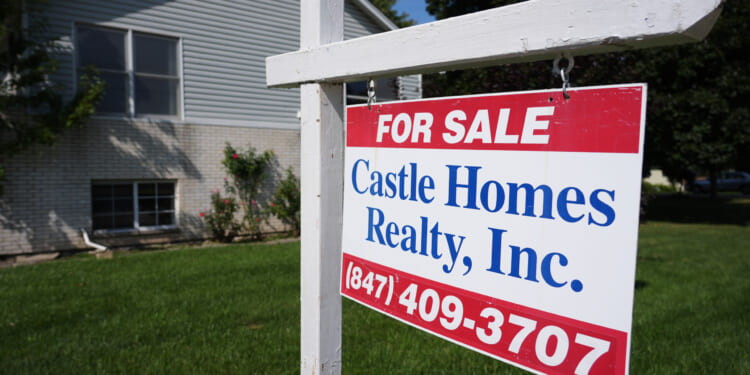Illinois home prices have jumped 48% since 2018 while available housing inventory has plummeted across all 26 tracked metro areas, creating a housing crisis driven largely by restrictive zoning laws and the nation’s highest property taxes.
Buying a home in Illinois costs a lot more than it did just a few years ago.
The typical home cost $191,531 in September 2018. As of September 2025, the typical home sells for $283,509, according to Zillow’s Home Value Index, a 48% jump.
The pain isn’t spread evenly across the state, though it affects virtually every part of it. Some communities have seen prices nearly double. Sauk Village leads the pack with home values up 162.1% since 2018. Ford Heights isn’t far behind at 139.9%, and even smaller cities like Apple River have seen increases of 88.4%.
Look below to see how home prices near you have changed.
These aren’t just numbers on a spreadsheet. They represent families who can no longer afford to buy homes in communities where they grew up, and young adults stuck renting because homeownership has moved out of reach.
The biggest culprit behind rising prices is simple: there just aren’t enough homes for sale.
Every single Illinois metro area tracked by Zillow – all 26 of them – has fewer homes available now than in March 2018. Chicago’s housing inventory has dropped 37%, falling from 38,581 available homes in 2018 to just 24,120 this year.
Even worse, 17 Illinois metro areas have seen their available housing stock shrink by more than Chicago’s already dramatic decline.
When there are fewer homes chasing the same number of buyers or more, prices go up. It’s basic supply and demand, and Illinois is clearly on the wrong side of that equation.
The numbers from Realtor.com paint an even bleaker picture. Illinois currently has just 42% of the active housing listings it had before the pandemic.
Compare that to the national average of 90%, and it’s clear Illinois is lagging far behind the rest of the country in its housing recovery.
The obvious solution would be to build more homes. But Illinois metros are still building at rates too low to meet demand, leaving families competing for a shrinking pool of available properties.
This housing shortage didn’t happen by accident. It’s the result of policy choices that make it harder and more expensive to build homes.
Restrictive zoning laws across Illinois make it difficult for developers to build new housing, especially the kind of modest, multi-unit buildings that could help working families afford homes.
Meanwhile, Illinois property taxes – the highest in the nation – eat up money that families could otherwise use for housing costs.
But there are solutions within reach. Communities could allow small apartment buildings with 8 to 10 units in busy areas, giving people more housing options. Cities could reduce or eliminate parking requirements near public transit, freeing up space for more homes instead of car storage.
Illinois could also make it easier to build accessory dwelling units: small apartments that help older residents age in place or give young professionals an affordable place to start.
Chicago has already taken some of these steps, but they need to spread statewide. However, even these reforms won’t be enough if Illinois doesn’t also tackle its property tax problem. Families who finally manage to buy homes won’t be able to keep them if tax bills continue to grow faster than their incomes.
Fixing Illinois housing means fixing both the rules that prevent building and the taxes that make owning unaffordable.










